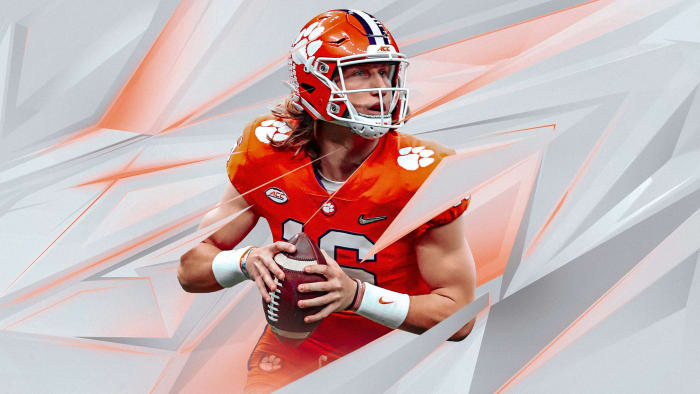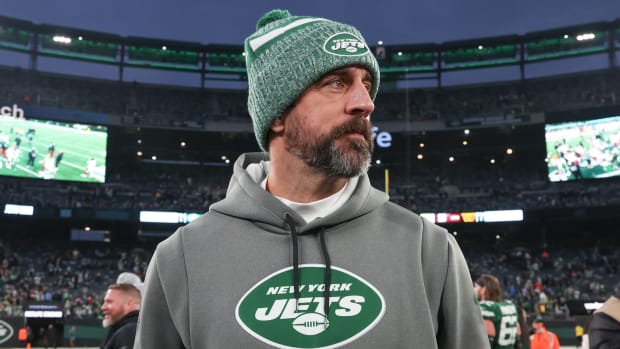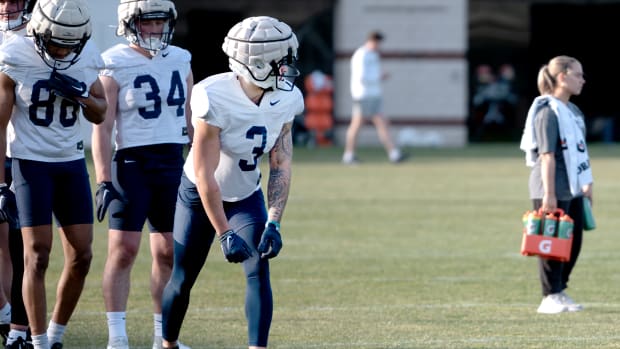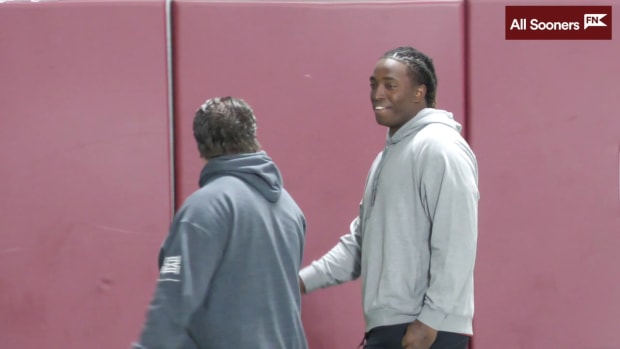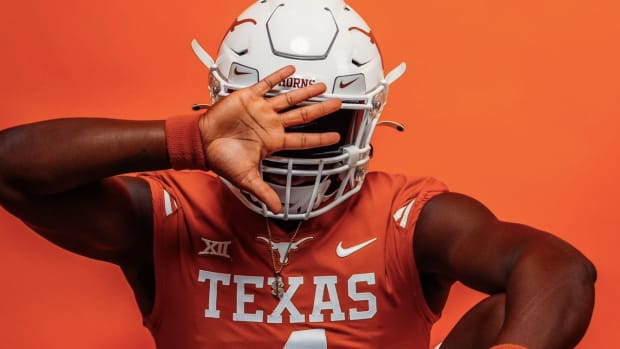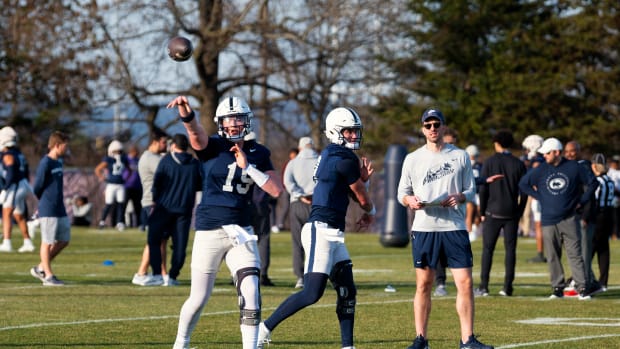Group Licensing Is the Key to the Return of NCAA Video Games—So What's the Holdup?
WASHINGTON, D.C. — Ahmad Nassar’s daughter was only 9 years old when she asked her father the question every parent dreads.
Why isn’t there a college football video game?
O.K., so a sports gaming question isn’t necessarily the one terrifying young parents, but maybe it should be. In a world flourishing with electronic gaming competition, an entire generation is unfamiliar with NCAA Football, the Electronic Arts college game that mesmerized gamers until legal disputes over its use of player likeness suspended production in 2014. Despite his expertise on the topic and his law degree, Ahmad had difficulty explaining to daughter Amany why she can play a game featuring the Detroit Lions, but not one that includes the Michigan Wolverines. “We’ve talked about it,” says Ahmad, a former executive at the NFL Players Association. “I told her, ‘Well, it’s complicated.’”
Last week, the NCAA made it even more complex. The governing body’s long-awaited report on athlete compensation, while lifting some amateurism principles, kept intact remnants of a bygone era, introducing restrictions on how players can profit from their name, image and likeness (NIL). Among the most notable, athletes cannot partner with schools for NIL ventures, use school or conference logos in such endeavors and are barred from entering group licensing deals. The restrictions, only recommendations at this point, would prevent the return of college video games while also making near impossible the wide distribution of trading cards and memorabilia like jerseys.
Instead of providing hope for the video game’s resurrection, the report shoveled more dirt on its 6-year-old grave, enraging and stunning not just millions of game-play addicts but gaming executives like Nassar as well as college administrators. It’s another NCAA roadblock preventing college players from earning income, especially unheralded athletes who are obscure enough not to reap substantial benefits from endorsements. Group licensing is a way for every athlete to get a piece of the money pie—and maybe the schools, too. “Group licensing is the quickest and most efficient way fans can get access to products they know and love,” says Nassar. “Group licensing powers that throughout pro sports. We want to bring that to the college ranks.”
Nassar, a 40-year old based in DC, has a vested interest in the NCAA’s decision. He’s the CEO of OneTeam Partners, a company that the NFLPA and MLBPA helped launch in November 2019 with a mission of maximizing the value of, for now, a professional athlete’s NIL through group licensing. OneTeam Partners had anticipated administering a college sports group licensing deal by facilitating NCAA parties with three entities that Nassar has long known: Panini, a licensee of sports trading cards and collective memorabilia; Electronic Arts, video game extraordinaires; and Fanatics, a retailer of licensed sports apparel and equipment. “They stand ready, willing and able to bring these products to fans,” Nassar says. “We know fans want it, retailers want it, media wants it, players want it and legislators want it. All the ingredients are there. Only thing missing is the NCAA allowing it.”
The restrictions in the NCAA report are stark signs that it is still clinging to shreds of a dying governance structure. These regulations could prove costly. They make it tougher for the NCAA to both gain Congressional assistance and defend itself in antitrust lawsuits, the latter of which holds truly remarkable irony: While it is increasing athlete compensation rights, the NCAA is making it more difficult to defend its overall amateurism model in a courtroom, multiple law experts say. There is another issue, too. The prohibition on school-and-athlete partnerships opens the door for players to compete against their own athletic departments for endorsements. “I have close relationships with athletic directors,” says Jim Cavale, the CEO of INFLCR, a software platform used by more than 100 college programs. “There was surprise that the school, athlete and brand can’t play together. The school and athlete can win together versus trying to compete for brand dollars.”
In short, the NCAA last week opened a dozen NIL doors while keeping closed a half-dozen. The governing body is walking a tightrope over a sea of detractors, conceding certain compensation rights while still gripping its old amateurism values. Imagine athlete compensation as a football field: one end zone representing a full-fledged open market where college athletes are employees and the other a closed system of uncompensated labor. The NCAA is hanging out around the 50, and while that’s more progressive than the old alternative, legal analysts contend the limbo walk is destined to fail. “They’ve created an unworkable solution,” says Don Jackson, an Alabama-based attorney who often represents athletes and their families against the NCAA. “They’re going to allow athletes to make unlimited income from NIL or they’re not. If they are, that’s great, but you can’t create a market and then attempt to place restrictions on that market.”
Michael Leroy, a professor in the Illinois College of Law who has published extensive work on antitrust in professional sports and labor policy, believes the foray into NIL is an evolutionary step to an employment relationship between school and athletes, something the NCAA has avoided and feared for years. “The Pandora’s Box,” he says, “has been opened.”
MCCANN: Legal Hurdles Await for the NCAA Over NIL Rules
The employee debate is at the center of the NCAA’s resistance to grant group licenses. A group license contract may push the NCAA too close to the employee-employer relationship with its athletes, says Ellen Zavian, a former NFL agent who is now a law professor at George Washington. “It would be another step closer for the national labor board to say, ‘You look like you have employees,’” says Zavian. “I don’t buy it. I don’t know how they’re not employees. If it looks like a duck, swims like a duck, and quacks like a duck, then it probably is a duck.”
Group licensing has historically been a professional sports concept negotiated by a players union. NCAA leaders last week claimed group licensing to be “unworkable” in college athletics without unionization, something industry experts loudly denounce. “You don’t need to have a union to have a group licensing deal,” says Donna Lopiano, a longtime college administrator who is now president-elect of the Drake Group, an organization of academics who defines its mission as defending academic integrity in higher education from the corrosive aspects of commercialized college sports. The Drake Group plans to release a response to the NCAA report next week outlining its objections, many of which include the exclusion of group licensing. Lopiano refers to the NCAA’s stance on the issue as “self serving and misleading.” Many sports law experts agree that a union isn’t necessary to have group licensing. Some of them even presented examples. Zavian offers the LPGA. It is a membership organization that enters into group licensing and sponsorship deals, yet every golfer is an independent contractor, not an employee.
Tom McMillen, a former Congressman from Maryland who is now president of Lead1, which represents FBS athletic directors, characterized group licensing as “the low-hanging fruit” of the NIL debate—fruit that the NCAA didn’t take. In fact, many expected the NCAA’s first step into the NIL world to include group licensing and maybe nothing else, allowing athletes incremental payments across the board as opposed to solitary income opportunities for events such as autograph signings, televisions commercials and social media ads. The report instead revealed the opposite. The result, some believe, will have star players with large social media followings making six and maybe even seven figures a year while others struggle to break into the five digits. Cavale, the CEO of INFLCR, says an athlete with a combined 150,000 followers on his social media platforms could stand to make “well into the six figures.” The face of college football in 2020, Clemson quarterback Trevor Lawrence, has almost 500,000 followers on Instagram alone.
Group licensing would open the door to the overlooked player, still part of a football team’s success but without the branding, name recognition or gaudy stats of a Lawrence. Take for instance a starting offensive lineman or a rotating defensive back. Under group licensing deals, they’d each get a cut, at the very least receiving an annual three-figure check from a video game and earning royalties from merchandise sales. Those in the industry refer to group licensing as an easy route to player income: athletes wouldn’t need to travel for photo shoots, film videos on their smartphones or craft social media ads. This would avoid one of administrators’ chief concerns with NIL: Athletes, already juggling school work, class schedules and sports training, will be burdened with money-making NIL ventures.
SEC commissioner Greg Sankey, in an interview this week with SI, says he hears about this issue from his athletic directors. “There are very clearly messages that student-athletes have significant time demands and adding this activity is only going to demand more time,” Sankey says. “The concerns about the focus of academics are there.”
During their work to create last week’s NIL report, NCAA leaders say they explored group licensing deals at the professional level, concluding that college sports lacks the “legal structure” to enter into such a deal and identifying the absence of a player’s association as a bargaining unit for athletes. However, industry experts believe such an association can be created in the college ranks—an independent, third-party organization to manage and oversee group licensing contracts that could both cut players and school into the profits. Because of the latter—schools earning money—Lopiano believes the NCAA report allows wiggle room for institutions to each explore group licensing deals.
However, that would mean ignoring the other two restrictions in the report: banning athlete-and-school partnerships and prohibiting players from using school trademarks. The first restriction was made to avoid potential recruiting inducements from NIL, but it also opens the door to what could be a fascinating circumstance: high-profile athletes pitted against their own administrators for endorsement opportunities. For decades now, the schools provided the only avenue to sign both sponsorship deals with national brands and accept big-money donations from boosters. Will those monies now go to athletes?
In a panel discussion in D.C. in January, McMillen offers a cautionary tale on the domino effect of such moves. “I was with the biggest college licensing firm in America last night and they said ‘Look, we’re already hearing from our licensees saying we’re going to cut back on the school,’” McMillen said then. “What that means is they’re going to cut back on the school because they’re going to look for opportunities for the kids. They may want to do a deal with 50 quarterbacks. Cutting back on the school means we’re going to lose many of our Olympic sports. That is a consequence.”
Leroy, the Illinois attorney, says the NCAA is both afraid of players using school brands in edgy advertisements and of its stars syphoning revenue streams from donations and sponsorship deals. The starting right tackle holding $25-an-autograph signing appearances isn’t the problem for the school, he says. It’s the Joe Burrows, Tua Tagovailoas and Trevor Lawrences who might command hundreds of thousands of dollars in endorsement contracts. Others feel this is overblown. A small group of players each year—at most 25, says one Group of Five athletic director—can warrant such attention as to compete with a school for income. College football, the AD says, remains more about the name on the front of the jersey rather than the back.
What is left unclear in the NCAA report is the prospect of a small group of players striking an endorsement deal without using school trademarks. For example, a quarterback and his five offensive linemen, wearing no school apparel or logos, appearing in a car commercial. The NCAA wards against this in the report, says Lopiano. “It is outright saying there are legal impediments to athletes getting together to do a group licensing deal,” she says. “That’s patently wrong.”
The report leaves many unanswered questions. It is only a bare-bones framework for a future set of NCAA rules governing NIL. Each of the three NCAA divisions is responsible for adopting its own rules based on the report’s recommendations, all of them instructed to form concrete legislation by Oct. 31 that can be put forth for a vote in January and implemented to start the 2021 academic year. Division I athletic directors who spoke to SI for this story believe that the final D-I legislation might not completely mirror the report. Changes are possible.
Those in the private sector sure hope so. Cavale, the INFLCR CEO, believes the recommendations are a “one-size-fits-all” framework for all three divisions. “Not only are D-I, D-II and D-III different, but schools in D-I are different. An SEC school and Ohio Valley school are different,” he says. “A lot of regulations will be evolved and curtailed per division.” If group licensing is to be added to NIL legislation, a nationwide set of standards is a requirement, says Amy Perko, executive director of the Knight Commission, a longstanding independent group that promotes reforms that support the educational mission of college sports. The Knight Commission, in its own NIL recommendations earlier this spring, excluded group licensing, in part because of recruiting concerns. “From our standpoint, we didn’t feel it appropriate to have a conference group license to allow for trademark usage. It allows for schools and conferences to put together payment packages,” she says, “but if you do it nationally and everyone is receiving the same thing, you take away recruiting advantages and other aspects out of it.”
If group licensing doesn’t happen this go-around, it likely happens years down the road, says Gregg Clifton, a sports attorney based in Arizona who used to work as an agent. This is only the beginning, Clifton says, the NCAA only dipping its toe in the NIL pool. “Eventually, the video game will be something that has to be addressed,” he says.
Nassar, meanwhile, plans to keep pushing for group licensing. One day maybe his daughter will have the ability to use her father’s alma mater, Michigan, to beat its hated rival, Ohio State, in NCAA Football 20-something. For now, she’s full of complicated questions with complex answers. Four years ago, not long after Amany Nassar asked her father about the existence of a college football video game, she threw another dreaded inquiry at her father.
Dad, how much are college football players paid?
More From SI.com Team Sites:
Trevor Lawrence: The Face of the College Athlete?
New NCAA Compensation Rules Come Too Late for Holden
What NCAA's NIL Proposal Would Mean for Duke Stars
